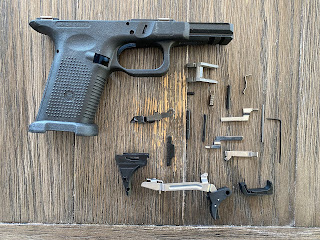Humminbird 768 Fish Finder
Not too long ago I mentioned how we bought a new Humminbird 768 Fish Finder for $200 rather than the regular price of $500, you can read the post here. We had installed the fish finder fairly easily, though we had to wait a little while to use it. We had gone to Dillon Reservoir and tried to launch the boat, but we weren't able to start the motor, you can read about that trip here.
As I mentioned in one of my last posts, we were able to get out to Green Mountain Reservoir and actually try out the fish finder. I'm not going to claim to be some kind of expert on fishing electronics. I also don't have a lot of experience with them, so the review that I am giving is based on using it for a short amount of time and based on my limited knowledge in fishing electronics.
First off, we were very pleased with the display on the Humminbird, it is wider than our previous unit and adds a lot of detail. Our old fish finder would only display fish symbols and did not give you an option to view the raw data. I've heard many people say that it is better to view the raw data, rather than the symbol, because you can interpret it yourself, rather than rely on what the fish finder believes is a small fish, large fish or group of bait fish.
As I mentioned in one of my last posts, we were able to get out to Green Mountain Reservoir and actually try out the fish finder. I'm not going to claim to be some kind of expert on fishing electronics. I also don't have a lot of experience with them, so the review that I am giving is based on using it for a short amount of time and based on my limited knowledge in fishing electronics.
 |
| Humminbird 768 indicating fish |
Using the fish finder with the symbols off, I quickly came to realize how valuable this is. It will take me awhile to truely understand all the different returns, but I quickly started to get a feel for how large a fish might be and what appeared to be groups of smaller fish. I was also able to clearly see my downrigger most of the time. This was great for knowing exactly where my lure would be in relation to where the fish were. The old finder would show a line of fish where the down rigger was, that made it extremely difficult to tell if there were fish there or if it was just the downrigger.
As I've mentioned in previous posts, with the old fish finder, we were having issues with getting depth readings below 100-120 feet. When the bottom dropped deeper than that, we would not only loose our bottom reading, but would also frequently lose all other display, the depth display would bound from 1 foot to 300 feet or more, even though we were likely in 100-200 feet of water. While Green Mountain Reservoir is not the deepest lake, we did get some strong readings down past 200 feet.
We also enjoyed the fact that the fish finder gives temperature reading from the water at the transducer. That didn't give us an idea of what the temperature was down where we were fishing, but it was interesting to note the temperature change as we moved around the lake.
The last feature that I would like to touch on is the GPS. I had really wanted the GPS option on our replacement fish finder, but I was worried that we wouldn't be able to find a unit that was in our price range. Fortunately this unit came with an external GPS receiver, so it was a simple task to secure the receiver and hook it up to the fish finder as we were installing it.
Using the GPS, we were able to monitor our trolling speed through out the day, this was especially helpful as we would change directions and the wind would speed us up or slow us down. Without the GPS giving us speed readings, we would have had no idea just how much the wind was affecting us. We were also able to use the GPS track to go back over the same schools of fish that we had marked on previous trips. This led to about a two hour window where we caught over a dozen lake trout and one salmon.
As I write this I believe that the Humminbird 768 has been discontinued, that means that with a little bit of searching, you should be able to find a good deal on the unit. This fish finder will serve you well and I definitely would recommend it!
 |
| Clear display on the Humminbird 768 |
As I write this I believe that the Humminbird 768 has been discontinued, that means that with a little bit of searching, you should be able to find a good deal on the unit. This fish finder will serve you well and I definitely would recommend it!

Comments
Post a Comment